Meeting Recap: Collecting Vintage Watches: How to Avoid Common Mistakes, Issues for Collectors to Discuss, and the Future of the Market
Eric Wind, Owner of Wind Vintage
Monday, March 4, 2019
Video recordings of lectures are available to members immediately (using your membership password), and the general public with a 2 month delay.
Given the increased interest in vintage watches, it was no surprise to see the incredible turnout for Eric Wind’s lecture titled Collecting Vintage Watches at the March 4, 2019 lecture series at the Horological Society of New York.
Wind started the lecture by asking two questions: Why watches? What makes a vintage watch valuable?
As far as Wind was concerned, culture, possession, treating things well, and appreciation of history and heritage are justifiable reasons for ‘why watches’. For the next question, the following determinants were listed on what makes a vintage watch valuable: Quality, Complications, Condition, Scarcity/Rarity, Style, Provenance, Association, Freshness to Market, Competition and Other X-Factors.
It didn’t take the audience long to realize that they were going to be bestowed with vintage watch wisdom from Wind’s next slide that was titled ‘What Are The Biggest Mistakes I See Vintage Watch Collectors Making?’ Wind listed 14 mistakes in total:
Birth Year watches
Doing it for ‘Likes’
Not knowing where you are on the passion/value scale
Not having an exit strategy for watches
Not thinking independently: More to life than Rolex, Patek and the Icons
Not having the right tools: UV Light, Geiger Counter and Loupe
Focus only on “Full Sets” (watches with box and papers)
Try to make your watches water resistant if possible
Buying rarity over condition
The best watches typically don’t make it to Instagram
Not recording serial numbers and photos of personal collection
Believing everything you see in a watch auction catalog is original
Not realizing the right strap or bracelet can make all the difference
Not understanding watch auctions
As a former Vice President, Senior Specialist of Watches at Christie’s (HSNY’s new sponsor), Wind touched upon the auction world in regards to vintage watches. One example was a scenario with a mint Rolex Daytona Ref. 6263 with box and papers along with an explanation of the consignment process. Also, it was important to note that the auction house represents the seller – not the buyer. Wind settled the subject by stating, “Just because a watch sold high at auction does not mean that the sale was concluded or that all of that model are worth more.”
After all that wisdom, the audience received another dose of knowledge when Wind produced a watch checklist that included: Provence, Dial, “Lume” on Both, Case and Case Back, Serial Number(s), Manufacture Information, Movement, Other (such as pushers, crown, crystal, etc.), Comparables (by Serial and Price) and Trend.
Considering all the variables with the watch checklist, Wind urges watch collectors to think, “Does it make sense?” as well as “What makes a watch honest?” and “What forms of restoration is acceptable?”. There also was a thought experiment to ponder - “What is the difference in price if a watch’s worth is totally original versus totally restored, but period correct and exactly the same?”.
The lecture was concluded with ideas on the use of blockchain, serial number registries, third-party grading from institutions such as GIA and PSA and Wind’s SWOT (Strength, Weaknesses, Opportunities, Threats) Analysis for vintage watch collecting.
Once again, the turnout for Wind’s lecture was incredible – it was HSNY’s largest turnout in at least 50 years.
HSNY thanks Eric Wind for his fascinating lecture!

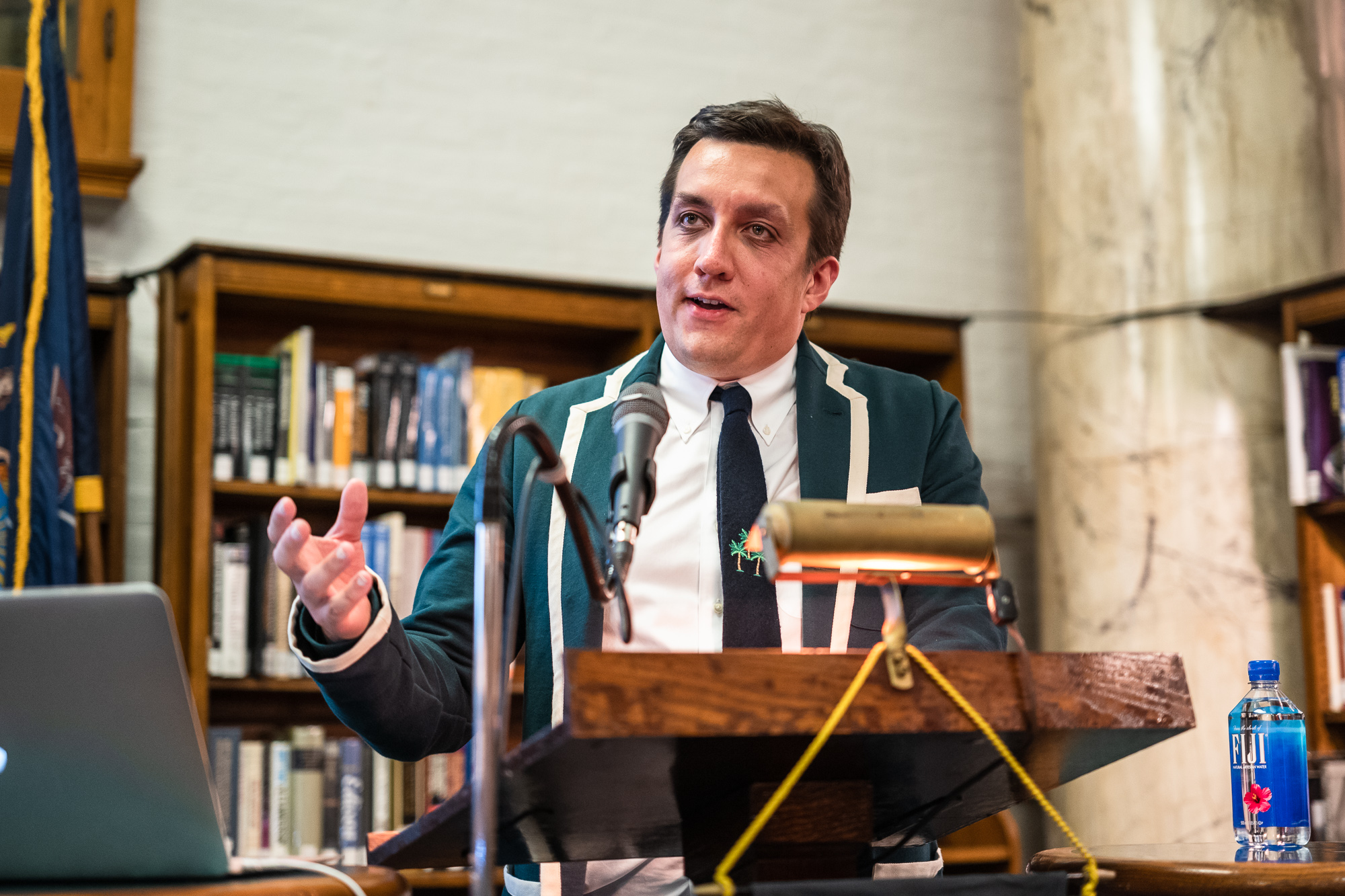

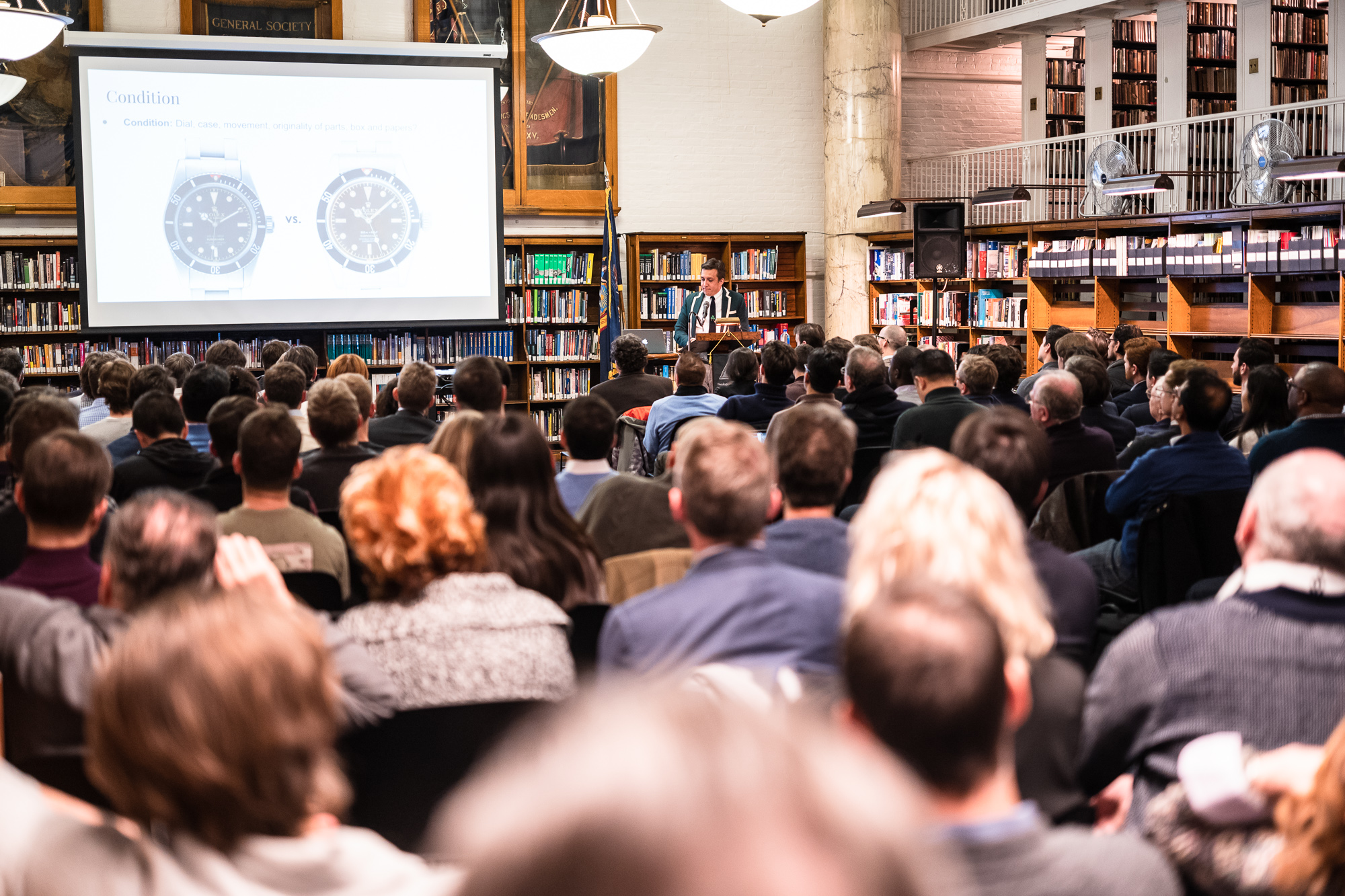
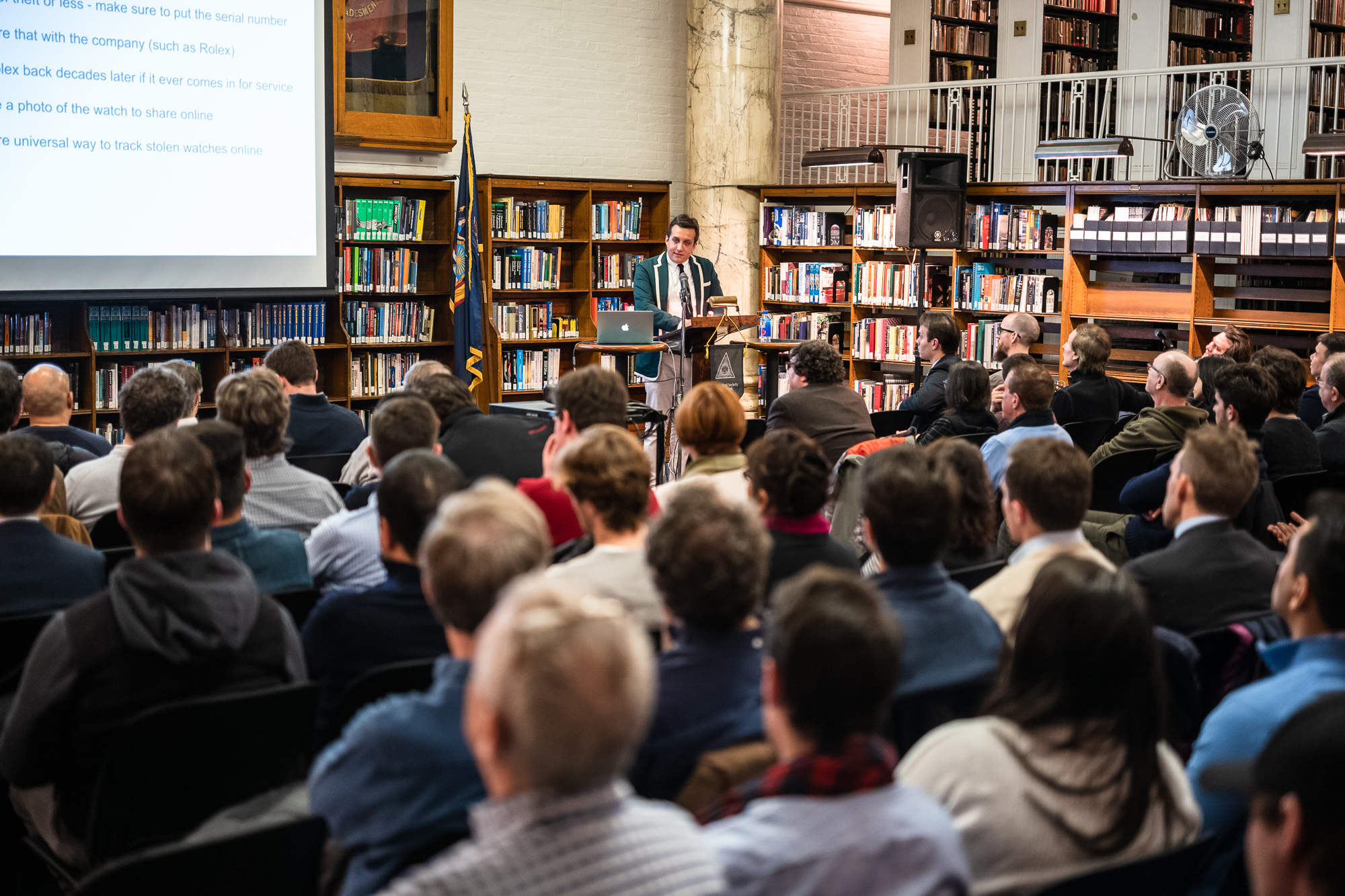
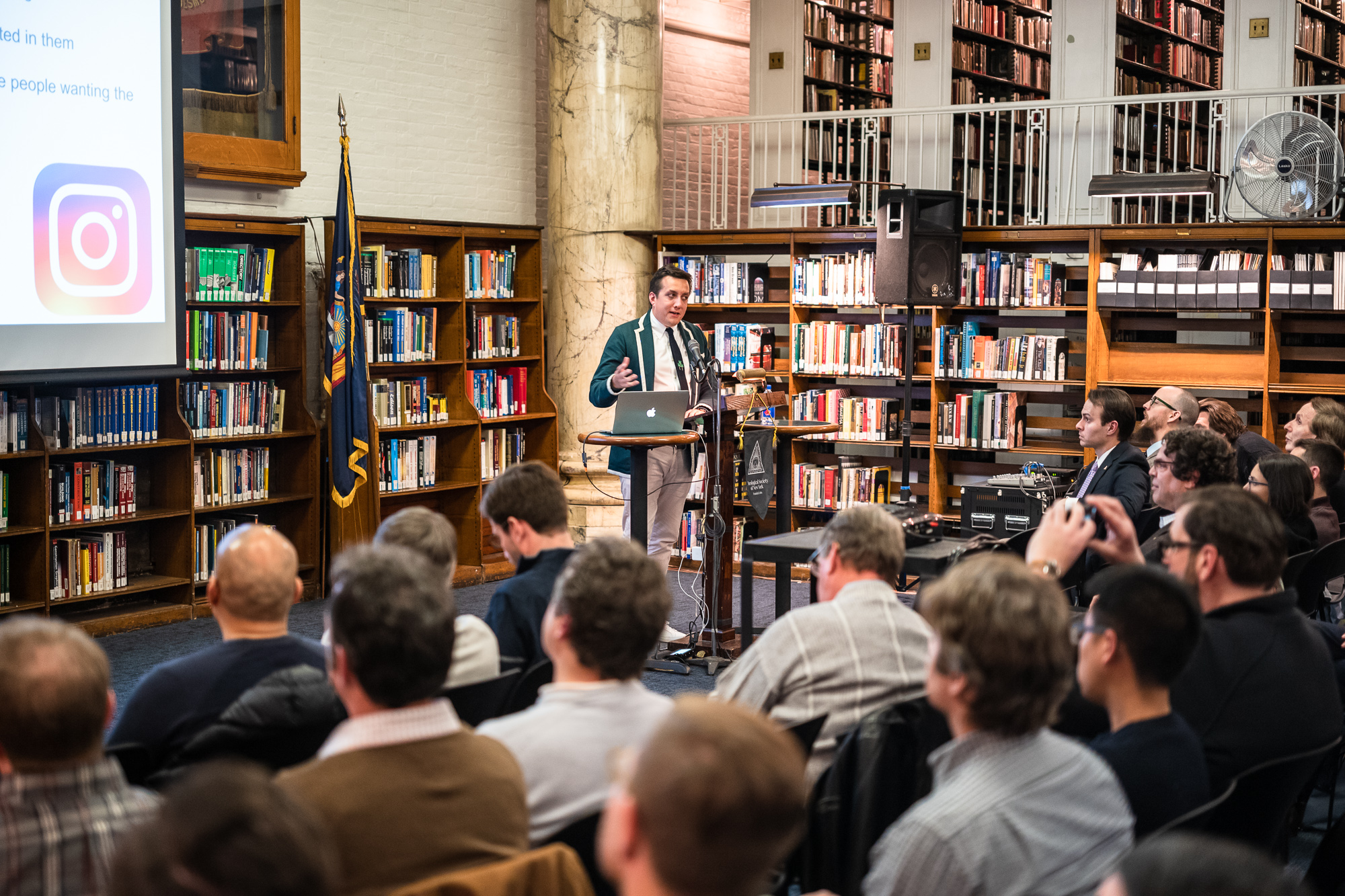

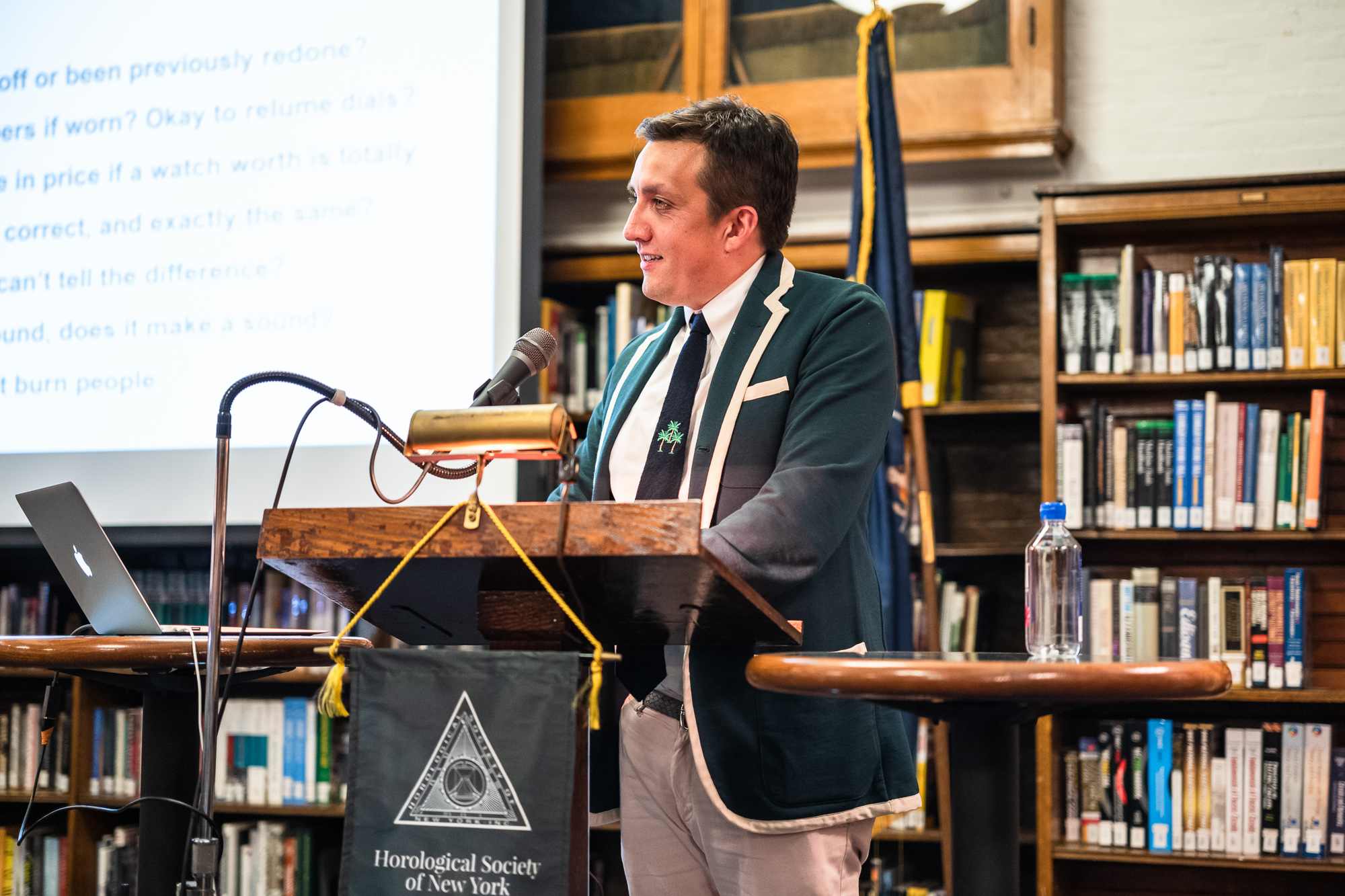

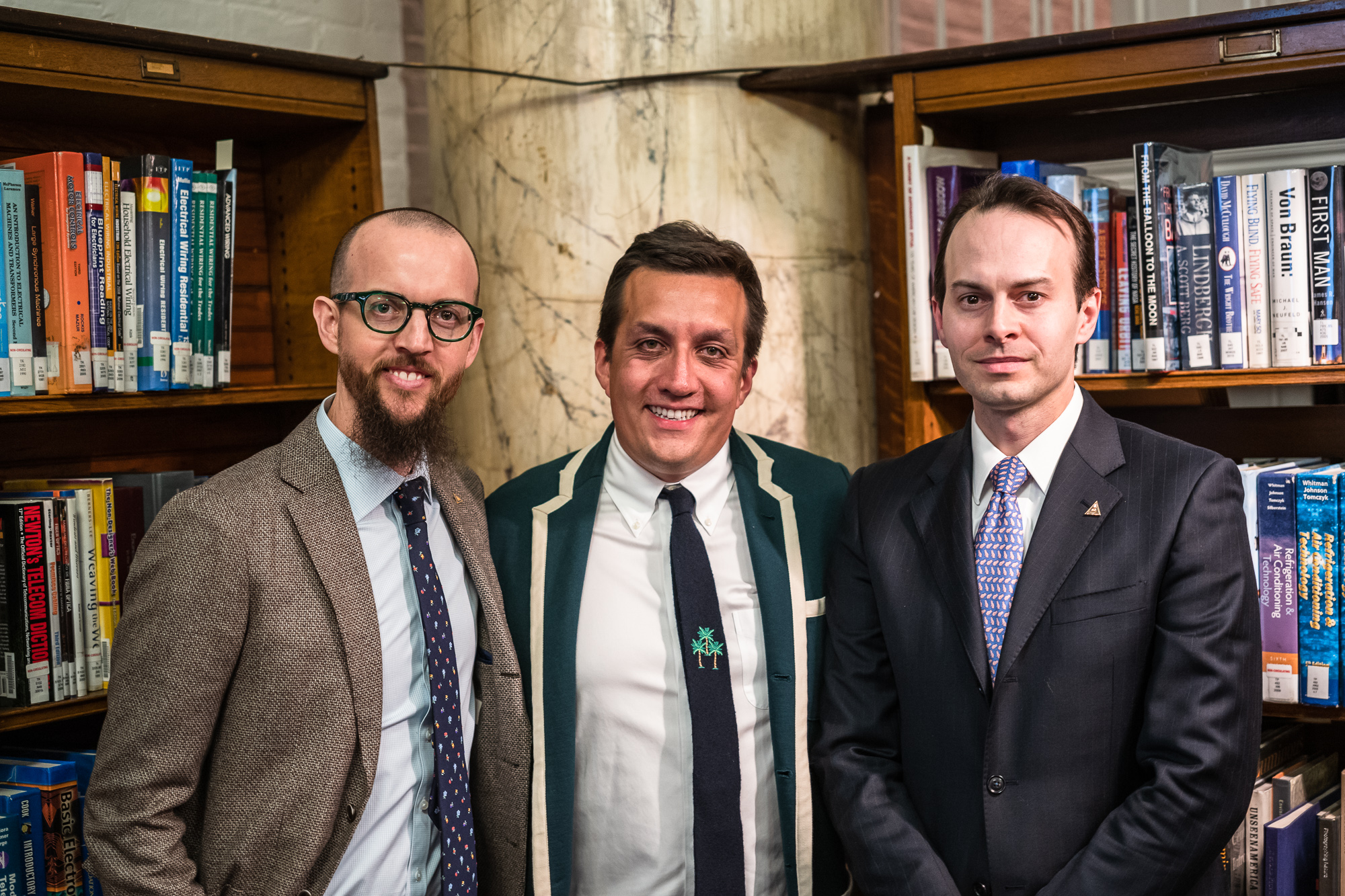
Photography by Atom Moore
Submitted by Melody Benloss, HSNY Librarian & Recording Secretary